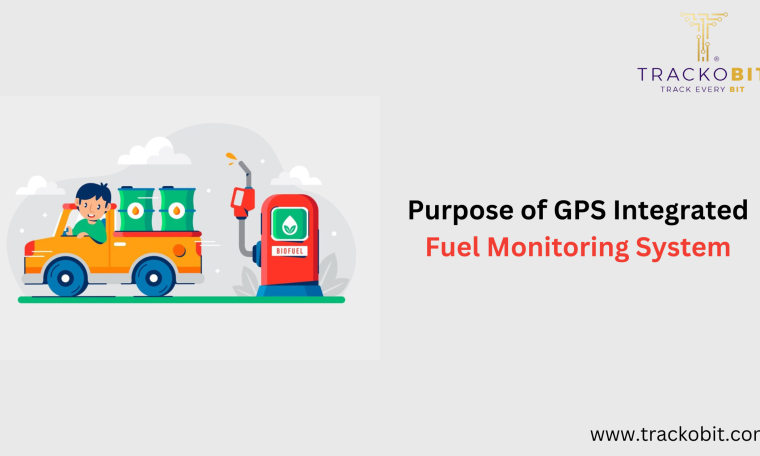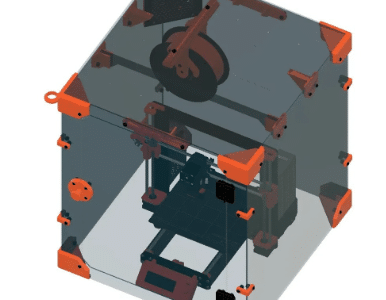
A GPS-integrated fuel monitoring system is a type of technology that helps in monitoring and managing fuel usage in vehicles, thus reducing operational costs. To put it simply, think of a usual GPS that you use for directions. Now, imagine that this GPS also monitors how much fuel the vehicle is consuming, when, and where. That’s pretty much what a GPS-integrated fuel monitoring system does. But, why is this helpful? Let’s cover all the points in this blog.
A Fuel Monitoring System is a comprehensive solution designed to track and manage fuel usage in vehicles or machinery. It employs various technologies, including sensors, GPS, and software, to monitor fuel levels, consumption patterns, and related data in real-time. The primary goal is to enhance efficiency, reduce fuel costs, and optimize overall fuel management.
Typically, the system includes sensors installed in fuel tanks to measure the quantity of fuel. This data is then transmitted to a central platform, often accessible through a web-based interface, where users can monitor fuel levels remotely.
What are the Core Problems of Fleet Management
To understand better, let’s take an example of a trucking company. They have many trucks running around the country, delivering goods. These trucks consume significant amounts of fuel, which is a huge cost for the company. As the company can’t constantly watch over each truck, drivers might use trucks for unauthorized journeys or leave the engine running needlessly, wasting fuel.
- Companies have to deal with mounting fuel expenditures. This issue not only pertains to the sheer number of vehicles it operates but also to how they are used.
- Operating countless vehicles demands an enormous amount of fuel, a major portion of the company’s expenses. Some drivers may use the vehicles without proper authorization, subsequently causing unnecessary fuel consumption. This misuse of resources is an issue that simply persists without significant changes in company policy or driver behavior.
- Given the large number of trucks in operation, routine checks and repairs become a cumbersome task. Moreover, neglect in this aspect can lead to costly repairs or even cause unplanned downtime, impacting the company’s ability to deliver timely shipments.
How Fuel Monitoring Systems Can Solve Your Fleet Management Challenges
Well, as we know- GPS is a technology that records the location of a vehicle through satellites. On the other hand, a fuel monitoring system is a device that keeps tabs on the amount of fuel in a vehicle. When these two technologies are integrate, it becomes beneficial for fleet management as i
-
Assists in Securing Fuel and Avoiding Extra Losses
GPS fuel monitoring systems help prevent unauthorized use or fuel theft by providing real-time updates about your vehicle’s fuel consumption. This proactive approach means that fleet managers can quickly respond to any problems like fuel leaks or theft, mitigating damage and potential losses.
-
Encourages Responsible and Safe Driving Patterns
Through monitoring fuel consumption, fleet managers can analyze driving behaviors, and detect speeding and rash driving incidents. This will enable them to implement changes and promote safer, more fuel-efficient driving practices. TrackoBit offers both GPS vehicle tracking software and fuel monitoring devices. If you’re interested in learning more about these services or want to use them,
-
Prevents Fuel Misappropriation or Leaks
GPS fuel monitoring systems provide real-time updates and accurate data to protect the vehicle’s most valuable asset, its fuel. In case, there’s a fuel leakage or theft, the fleet managers are notified immediately, allowing them to act swiftly, and preventing potential damages and subsequent losses.
Read More: Oman Diesel Generator Market May See a Big Move
Choosing TrackoBit’s Fuel Management Solutions For Your Fleet
TrackoBit’s fuel monitoring software, incorporated in fleet management software, is designed to provide precise fuel information for proper management and cost reduction. It does this by tracking fuel consumption, notifying fuel fills or ejects, generating detailed reports, and accessing real-time fuel prices.
Functionally, the system works as follows:
- Tracking Fuel Consumption: Using advanced technology, the software monitors and records the exact amount of fuel consumed by every vehicle in the fleet. This monitoring system allows managers to check the fuel efficiency of each vehicle and identify any irregularities. For example, if a delivery truck that typically uses 10 gallons of fuel suddenly starts using 15 gallons without a corresponding increase in miles or load, the system would flag this as a potential problem, like a mechanical issue or fuel theft, prompting immediate attention.
- Notification of Fuel Fill/Eject: The system automatically sends out notifications in real-time whenever there’s a fuel refill or ejection. This helps detect theft or fuel pilferage. For instance, if a fuel tanker refilled 500 liters and the system recognizes that not all of the refilled amount made it into the tank, the manager would receive a notification. This can indicate potential theft or leakages.
- Detailed Reports: Detailed fuel consumption reports include data like the amount of fuel filled, miles driven, idle times, fuel efficiency of each vehicle, etc. These reports help fleet managers identify areas for improvement and potential issues. For example, if a regular delivery route consistently shows high fuel consumption, this report allows managers to identify factors, such as traffic or inefficient routes, that may be contributing to the high consumption and implement changes to rectify this.
- Real-Time Fuel Prices: The system also provides real-time fuel prices from multiple stations, thereby helping businesses plan the refueling of vehicles efficiently and economically, saving costs. If a fleet driver is approaching a refuel milestone, the software can provide the driver with nearby fuel stations and their current fuel prices.
- This allows the driver to choose the most cost-effective option rather than refueling at the most proximate or convenient station that might be more expensive.
Before You Go!
Make the smart move towards better fleet management with our fuel monitoring system software. Don’t let unsafe driving and poor fuel efficiency affect your business. Keep your vehicles, drivers, and business safe with TrackoBit. Get in touch with us today via our website and find out how we can help you optimize your fleet management while ensuring safety and efficiency.



